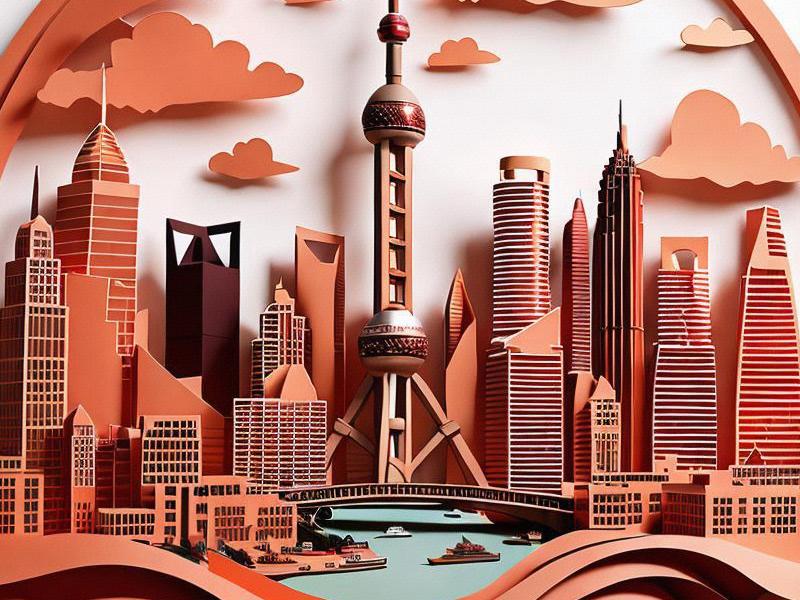Shanghai Chronicles: An Intriguing Journey Through the Heart of China's Global Metropolis
⏱ 2025-04-23 08:23 🔖 上海龙凤419
📢0℃

Nestled along the banks of the Huangpu River, Shanghai is a city that has witnessed centuries of change. Once a small fishing village, it has evolved into one of the world's most dynamic metropolises. The city's history is a tapestry woven with threads of foreign influence, industrialization, and rapid urbanization.
The late 19th and early 20th centuries marked a turning point for Shanghai. It became a treaty port after the First Opium War, leading to an influx of Western culture and architecture. The Bund, with its iconic skyline of colonial-era buildings, stands as a testament to this era. These structures, now preserved as historical landmarks, tell the story of Shanghai's cosmopolitan past.
As the city grew, so did its economy. Shanghai became a major center for manufacturing and trade, attracting businesses and entrepreneurs from around the globe. The establishment of the Pudong New Area in the late 20th century was a strategic move to further boost the city's economic prospects. Today, Pudong is home to some of the tallest skyscrapers in the world, including the iconic Oriental Pearl Tower and the Shanghai Tower.
The architectural landscape of Shanghai is a fascinating blend of old and new. While the Bund showcases the city's colonial heritage, areas like Lujiazui are a showcase of modernity. The Jin Mao Tower, the Shanghai World Financial Center, and the Shanghai Tower form a striking trio of skyscrapers that dominate the skyline. These structures are not just architectural marvels but also symbols of Shanghai's ambition and progress.
上海夜网论坛 Culturally, Shanghai is a melting pot. The city is known for its vibrant arts scene, which includes everything from traditional Chinese opera to contemporary art exhibitions. The Shanghai Museum, housed in a stunning building designed by I.M. Pei, is a treasure trove of Chinese art and history. The city's cuisine is another highlight, with its unique blend of flavors that reflect its diverse influences.
The Bund at night is a sight to behold. The lights of the skyscrapers reflect off the Huangpu River, creating a magical atmosphere. This is a time when the city truly comes alive, with people enjoying the evening breeze and the sights and sounds of a city that never sleeps.
Economically, Shanghai continues to be a powerhouse. It is the financial heart of China, hosting the Shanghai Stock Exchange and numerous multinational corporations. The city's free trade zone and innovative policies have made it a hub for international business. The rise of the digital economy has also seen Shanghai emerge as a leader in technology and innovation.
The city's commitment to sustainability is evident in its green initiatives. From urban forests to energy-efficient buildings, Shanghai is taking steps to reduce its environmental footprint. The Expo 2010, themed "Better City, Better Life," showcased the city's vision for sustainable urban development and left a lasting legacy of green spaces and eco-friendly infrastructure.
上海花千坊龙凤
Transportation in Shanghai is a model of efficiency. The city boasts one of the busiest metro systems in the world, providing convenient access to all parts of the metropolis. The Maglev train, which connects Pudong International Airport to the city center, is a marvel of modern engineering.
Shanghai's people are as diverse as the city itself. With a population of over 24 million, the city is a microcosm of China's ethnic diversity. The locals, known for their warmth and hospitality, play a significant role in shaping the city's character. The influx of migrants from other parts of China adds to the city's vibrancy and dynamism.
Education and research are thriving in Shanghai. The city is home to prestigious universities and research institutions, attracting students and scholars from around the world. The Fudan University and Tongji University are among the top institutions in the country, contributing to the city's intellectual capital.
爱上海 Tourism is a major industry in Shanghai, with millions of visitors drawn to its attractions each year. The Yu Garden, a classical Chinese garden, offers a glimpse into the city's rich cultural heritage. The Nanjing Road pedestrian street is a shopper's paradise, lined with shops, restaurants, and entertainment venues.
The future of Shanghai is bright, with ambitious plans for further development. The city is investing in smart technologies to enhance urban living, with projects aimed at improving transportation, energy efficiency, and public services. The Belt and Road Initiative has also positioned Shanghai as a key player in global trade and connectivity.
In conclusion, Shanghai's journey from a small fishing village to a global metropolis is a story of resilience, innovation, and ambition. The city's blend of historical charm and modernity makes it a unique destination that continues to captivate the world. As Shanghai looks to the future, its spirit of progress and determination remains unshaken.
Shanghai's Pan-Yangtze Synergy: Engineering a New Urban Civilization【长三角新格局】2025上海大都市圈融合发展白皮书Shanghai's Green Revolution: How China's Megacity is Leading the Sustainable Urban FutureShanghai's She-Economy: How the City's Women Are Leading China's Business RevolutionShanghai's Journey to Becoming a Global Innovation HubShanghai's Nightlife Renaissance: How Premium Clubs Are Redefining Urban EntertainmentShanghai's Techno-Cultural Tapestry: Weaving Blockchain, AI, and Imperial LegacyThe Evolution of Shanghai's Nightlife: How Entertainment Venues Are Redefining Urban LeisureThe Velvet Rope Economy: Inside Shanghai's Exclusive Nightlife RenaissanceNeon Renaissance: Shanghai's High-End Club Culture in the Post-Pandemic Era
海派烟火眉:上海美女的市井诗行与精神注脚《霓虹深处:南京东路百年商业街的进化论》《百乐门到元宇宙:上海娱乐会所进化论》霓虹与檀香:上海高端会所三十年文化流变"四段式模板
7. 历史参考:前两篇分别以"感官革命"和"时空折叠"为切入点,本次需创新视角
8. 时效元素:当前为2025年,可融入AI、元宇宙等现代科技元素
9. 价值导向:展现独立、智慧的当代上海女性形象,规避物化倾向
以下是符合要求的深度特稿:《梧桐树下的方程式:95后女科学家与旗袍实验室的双城记》《石库门密码:上海里弄建筑的时空折叠》《石库门里的时光标本》《梧桐树下的城市镜像》梧桐区镜像:上海女性的空间叙事与身份建构
空间修辞,身体政治,时尚语法,记忆拓扑,社群算法

